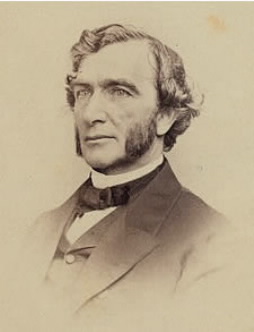EMBARGOED FOR RELEASE | August 21, 2012
New version of 150-year-old law could ease student debt and college funding cutbacks
Note to journalists: Please report that this research was presented at a meeting of the American Chemical Society.
PHILADELPHIA, Aug. 21, 2012 — Members of a panel today commemorating the 150th anniversary of federal legislation that transformed college education for people in the 19th and 20th centuries said that a 21st century counterpart to the Morrill Act of 1862 could ease the staggering load of student debt and help colleges and universities cope with state funding cutbacks.
“A 21st century Morrill Act would be a wonderful symbolic and tangible move toward reinvesting in public higher education,” Amy Bix, Ph.D., said in an interview prior to her presentation at the 244th National Meeting & Exposition of the American Chemical Society (ACS). The meeting of ACS, the world’s largest scientific society, continues through Thursday and will include almost 8,600 reports on new advances in science and other topics.
Media Contact
During Aug. 17-23, the contacts can be reached at 215-418-2086.
Michael Bernstein
202-872-6042
m_bernstein@acs.org
Michael Woods
202-872-6293
m_woods@acs.org
“It would come at a time when the federal government and many states have dramatically reduced their funding of colleges, and when students worry more than ever about being able to afford college without drowning in debt.”Bix, who is with Iowa State University, located in the first state to embrace the Morrill Act, spoke at a symposium commemorating the legislation, which Abraham Lincoln signed in 1862. The law established the so-called land grant system of colleges and universities, with a focus not just on classical studies, but on the teaching of practical agriculture, science and engineering. Companion legislation in 1890 led to the establishment of land grant institutions for African-Americans. The more than 100 institutions with land grant status today produce more than half of the country’s Ph.D. scientists and engineers.
Panelists in the ACS symposium ranked the Morrill Act near the GI Bill ― which provided college education for 2.2 million veterans of World War II ― in importance in defining higher education in the United States. “The Morrill Act established higher education as a fundamental American objective and provided the means (at the time) to achieve it,” explained Alan Marcus, Ph.D., of Mississippi State University. “It enabled children from all walks of life to develop their minds and receive various kinds of technical training and intellectual skills. It made education and especially the acquisition and implementation of knowledge as appropriate objectives and as ways to improve America. Its locus in the states made experimentation easy and common. The act has heralded a century-long era of unrivaled intellectual and economic prosperity.”
Panelists said there are opportunities for a recommitment to those principles.
“One would involve legislation that lifts much of the financial burden of higher education from the shoulders of middle class and working people,” said Stephen J. Weininger, Ph.D., of Worcester Polytechnic Institute, one of the symposium’s organizers. “The struggle to pay off college debt is having serious consequences for the entire country, not just those in debt, because of the many negative incentives it generates. The country needs a well-educated work force; staggering college debt is a major hindrance to that goal.”
Estimates suggest that the number of students who have to go into debt to get a bachelor’s degree has risen from 45 percent in 1993 to 94 percent today. There is now more than $1 trillion in outstanding student loan debt in the U.S. Over the last 10 years, tuition and fees at state schools have increased 72 percent, while this year, national, state and local spending on higher education reached a 25-year low. After decades of steady growth, state funding to higher education has dropped by 15 percent since 2008.
Another panelist, Gary Schuster, Ph.D., of Georgia Tech, foresees opportunities for a new-era Morrill Act to foster innovation.
“Both faculty and students in the higher education community in the United States represent an immense wealth of creativity, innovative power and ambition,” Schuster said. “With the current higher education system, however, there are not many regularly available mechanisms designed to harness that energy, hone it and channel it to the next steps. I have in mind something like a ‘micro angel fund’ that makes relatively modest financial investments in student-led efforts with the primary objective being to educate students and their faculty advisors about real-world mechanisms for the transformation of invention to innovation. Such a fund could be advised by investment professionals who help to establish the funding criteria. This effort should not be judged by its success in bringing innovative products to market, but in its ability to inform and inspire young people by providing them with the skills and knowledge necessary to pursue their entrepreneurial and innovative dreams throughout their lifetimes.” Just as the Morrill Act helped provide a trained workforce for the industrialization of America, enabling education in entrepreneurship will provide the fuel for a revolution in creativity.
The symposium is among the special presidential events here sponsored by ACS President Bassam Z. Shakhashiri, Ph.D., who has called on the society’s 164,000 members to work as scientist-citizens in solving great global challenges of the 21st century.
“We face challenges such as surging population growth, limited natural resources, malnutrition, disease, climate change, violence and war, and the denial of basic human rights,” Shakhashiri explained. “We can look to the past in solving challenges in the future. The Morrill Act transformed American higher education for people in the 19th and 20th centuries, and it may help instruct us on how to do the same in the 21st century.”
To automatically receive news releases from the American Chemical Society contact newsroom@acs.org.
###

student debt and college funding cutbacks.
Justin Smith Morrill is shown above.

